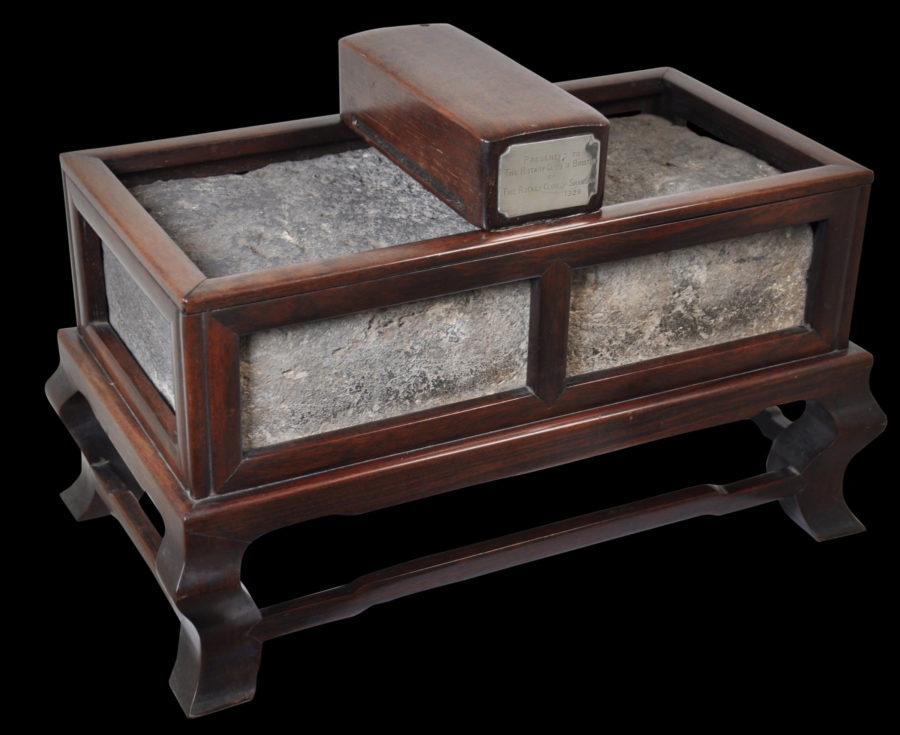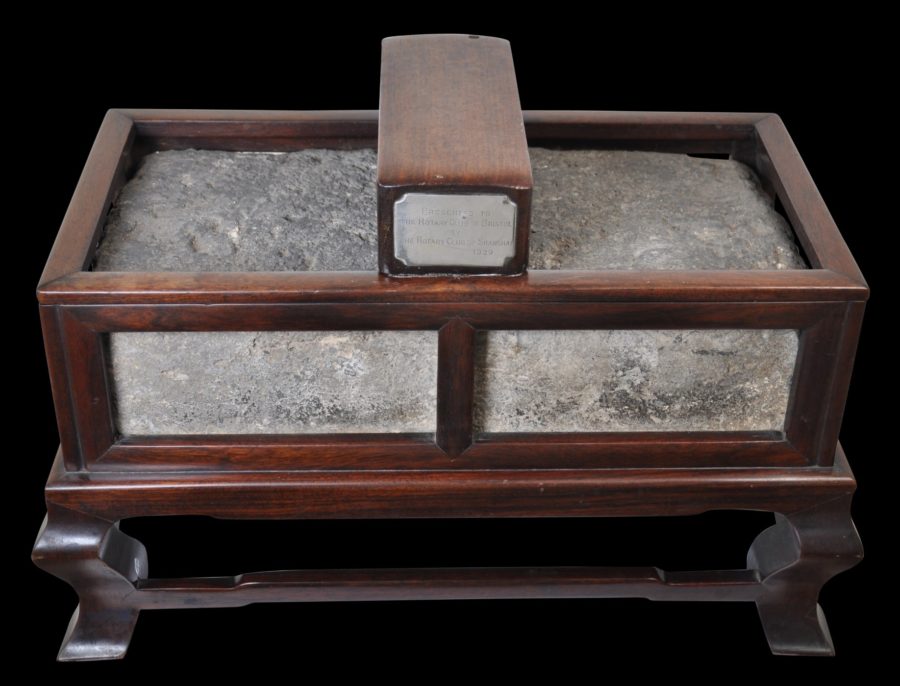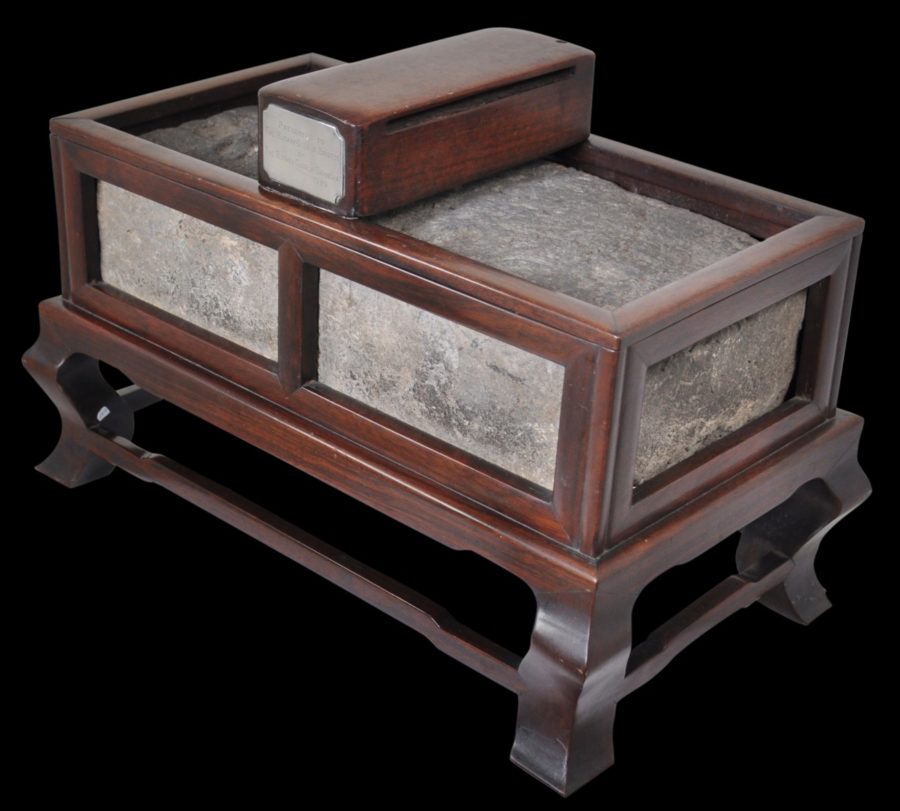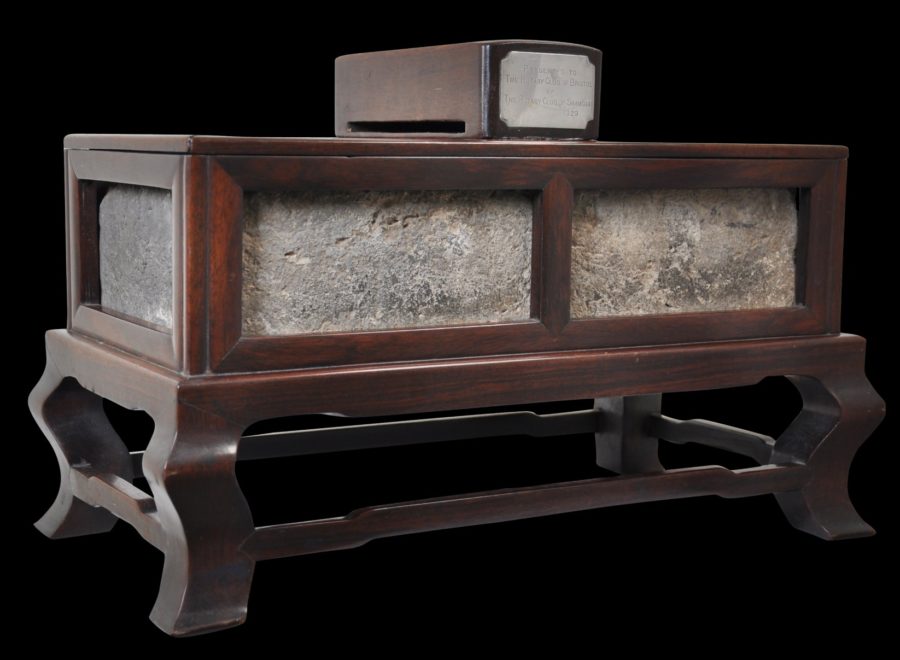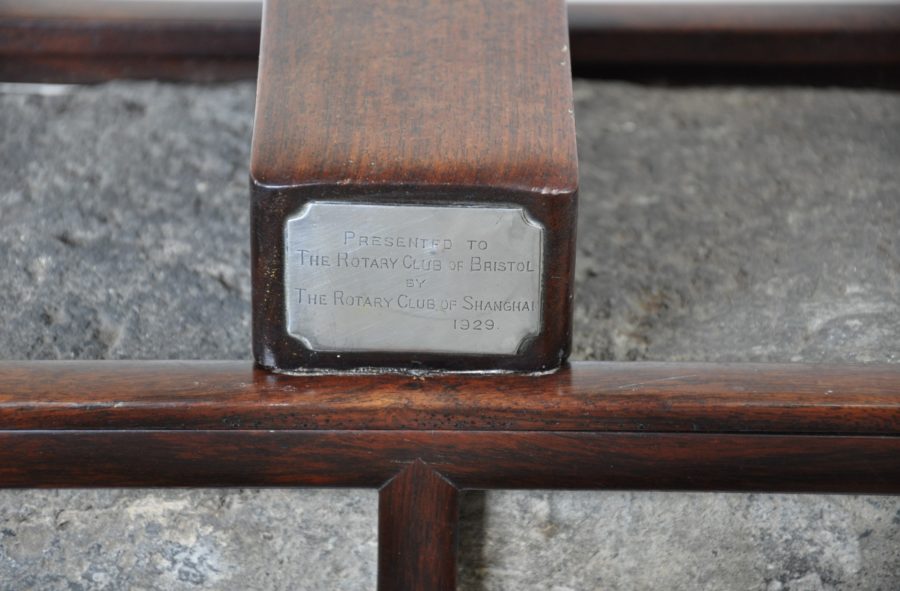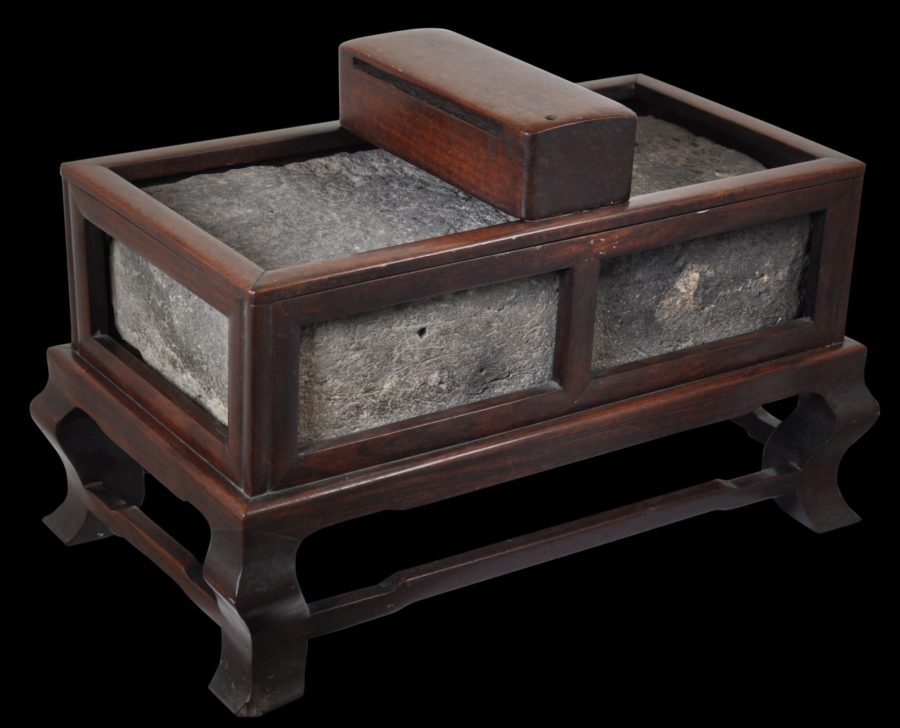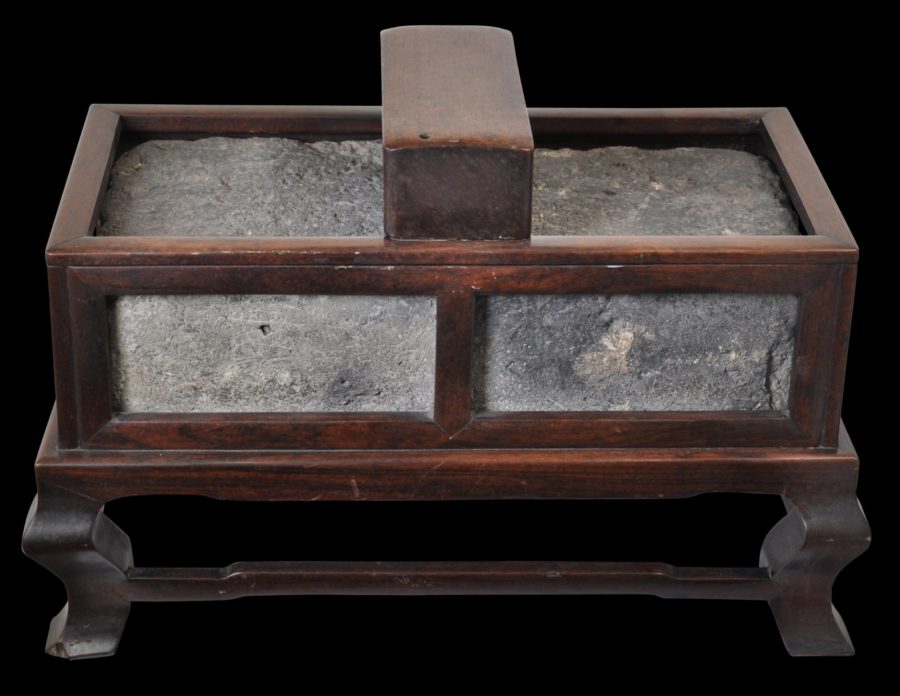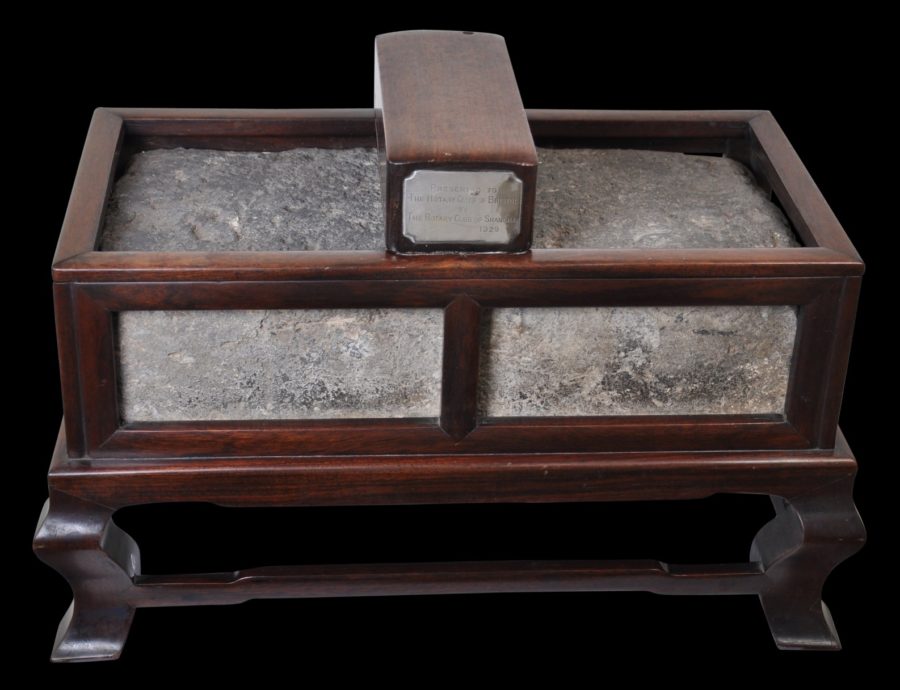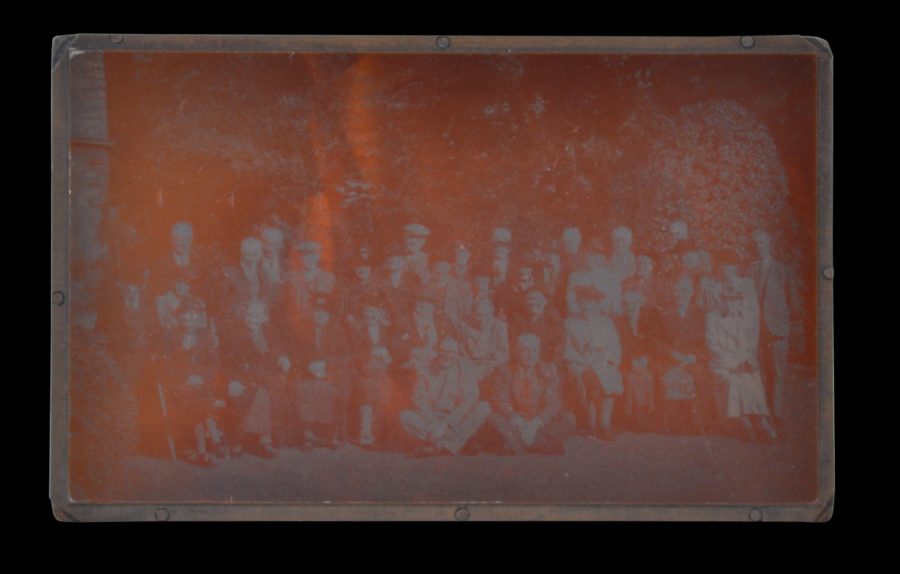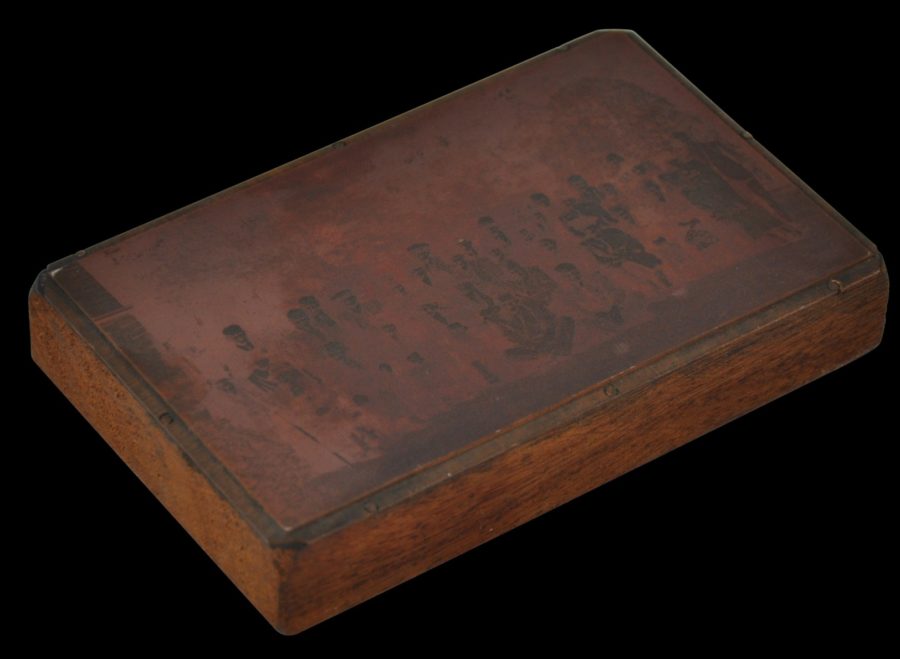Enquiry about object: 5741
Great Wall of China Brick & Hongmu Stand dated 1929, & Etched Photogravure Plate of Presentation Ceremony
China stand dated 1929; brick dates to the Ming Dynasty (1368-1644)
length of stand: 43.8cm, height: 28cm, depth: 24.5cm
Provenance
Rotary Club of Bristol, UK, since 1929.
This brick in a fitted hongmu wood stand is a brick from the Great Wall of China. Most likely the brick itself dates to the Ming Dynasty (1368-1644) when sections of the Great Wall were rebuilt using fired clay bricks.
The brick and stand has direct provenance dating back to 1929 when it was presented to the Rotary Club of Bristol in the west of England by a visiting delegation from the Rotary Club of Shanghai. (The Shanghai club was established in 1919.)
The silver presentation plaque is fixed to the stand and this reads: ‘Presented to the Rotary Club of Bristol by the Rotary Club of Shanghai 1929’.
The brick is solid and in rectangular cuboid form. The brick seems to have traces of paler mortar, which is consistent with the mortar that was used to hold such bricks in place in the Wall – a mixture of lime and ground rice.
It is encased in an elegant carved and polished hongmu wood stand which sits on four cabriole legs. The stand is topped by a hollow box that sits over the brick and to which the silver plaque is affixed. The box has length-wise slits and possibly was intended to be struck or ‘rung’ with a tapper perhaps to call a meeting to order.
A photogravure engraved copper printing block accompanies the item. This shows the presentation ceremony when the Shanghai Rotary Club presented the brick to its Bristol counterpart in 1929.
The metal lidded packing box in which the brick came from China has been retained with the brick.
Bricks made for the Great Wall during the Ming period, were fired in local kilns. The bricks were used to extend the Wall and to maintain it. Maintenance work along the wall was carried out annually during the Ming Dynasty, with major repair and rebuilding occurring every five to ten years. Damage from heavy rains and earthquakes were among the reasons such repair work was required. Significant damage occurred much later was parts of the wall were used by local villagers to build other buildings, and also during the first half of the twentieth century with revolution and the Japanese invasion.
It was not uncommon in the 19th and early 20th century for bricks from the Great Wall to be taken away as souvenirs or to be presented to visiting officials. The Powerhouse Museum in Sydney Australia has an almost identical brick and stand, and an early noted attached to the stand indicates that it also was sourced from Rotary in China. The brick and stand was presented to the Museum in 2007 by Rotary International (museum inventory no.: 2007/18/1).
Hongmu is a generic term used for rose wood. Such woods traditionally have been highly valued in China particularly during the Qing Dynasty for their rich, red colour. Accordingly, such woods were expensive and used for items of furniture in the houses of officials, aristocrats and in palaces.
The brick is in excellent condition. The stand has a fine patina. There is a small chip to one of the feet but other than that, there is no damage. Overall, the stand and brick have a splendid sculptural quality. The provenance is incontrovertible too.
References
Jacobsen, R.D. & N. Grindley, Classical Chinese Furniture: In the Minneapolis Institute of Arts, Paragon Publishing, 1999.
Roberts, C ., & G.R. Barme (eds.), The Great Wall of China, Powerhouse Publishing, 2006.


